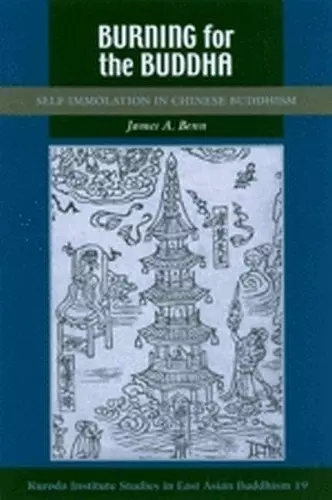Burning for the Buddha
Self-Immolation in Chinese Buddhism
Format:Paperback
Publisher:University of Hawai'i Press
Published:30th Nov '16
Currently unavailable, and unfortunately no date known when it will be back

Burning for the Buddha is the first book-length study of the theory and practice of ""abandoning the body""(self-immolation) in Chinese Buddhism. It examines the hagiographical accounts of all those who made offerings of their own bodies and places them in historical, social, cultural, and doctrinal context. Rather than privilege the doctrinal and exegetical interpretations of the tradition, which assume the central importance of the mind and its cultivation, James Benn focuses on the ways in which the heroic ideals of the bodhisattva present in scriptural materials such as the Lotus Sutra played out in the realm of religious practice on the ground.
A carefully documented and beautifully written account of the history of a set of somatic practices that has been a part of Chinese Buddhism for some fifteen hundred years yet heretofore received scant attention in the scholarly literature. . . . Benn has done an excellent job of presenting a stimulating and wide-ranging set of issues about a subject that in less capable and sensitive hands might have strayed toward the sensational or macabre. This book deserves to be on the bookshelf of all students of Chinese Buddhism and is highly recommended as a classroom tool."" - Journal of Chinese Religions; ""Benn has written a short, elegant, and provocative history of Buddhist self-immmolation in China from the fifth to the early twentieth century."" - Harvard Journal of Asiatic Studies; ""Benn’s study is admirably well written and well researched—for both style and content, it deserves to stand among the major contributions to Buddhist studies of recent decades. . . . This book is an enjoyable read, suitable for students and scholars alike."" - Journal of Asian Studies; ""A fine and well-organized book in which James Benn introduces the reader to an interesting topic. . . . For Buddhist studies, Benn has done an excellent job describing a facet of Chinese Buddhist life that has hitherto been neglected in academic accounts of Buddhism and that modernist emic descriptions of Buddhism are unlikely to emphasize in the foreseeable future. The value of Burning for the Buddha for the study of religion at large is obvious."" - Journal of Religion; ""Burning for the Buddha presents a wealth of engaging material and should be stimulating reading for those interested in religious ideas of the body. It is, of course, an essential book for students of Chinese Buddhism, one of the very few thus far to provide a multi-faceted, historical view of a specific practice."" - Journal of the Academy of Religion; ""A compelling and thoroughly researched study of self-immolation among Chinese Mahayana Buddhists. . . . Highly recommended."" - Choice; ""Benn explores one of the most striking customs in the history of Chinese Buddhism, showing that, far from a marginal act by disturbed deviants, self-immolation was a carefully considered, mainstream practice. This is a subject with implications for scholars interested in the sinification of Buddhism and the history of Buddhist asceticism, but also for scholars with interests beyond Buddhism, since it has immediate bearing on the history of suicide and attitudes towards the body in China."" - John Kieschnick, University of Bristol; ""At a time when scholars of religion are paying increasing attention to notions of the body, James Benn has produced a masterpiece on the practice of self-immolation in Chinese Buddhism. This wonderfully written and thoroughly researched book will remain the authoritative treatment of the subject for generations to come. Proceeding roughly chronologically, Benn moves from the earliest biographies containing accounts of eminent monks burning themselves, through the locus classicus for the justification of the practice (the Lotus Sutra), to more neglected materials of medieval and late medieval times, right up to the twentieth century. Along the way, he treats us to insightful discussions of the many changing social, political, ethical, ideological, and ritual contexts of the practice. This book makes it clear that Burning for the Buddha—something that was once considered to be an exceptional and anomalous act carried out by a few monks—was, in fact, a well-established and well-recognized practice that endured longer than most other aspects of Chinese Buddhism."" —John Strong, Bates College
ISBN: 9780824867898
Dimensions: unknown
Weight: 542g
376 pages